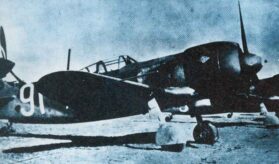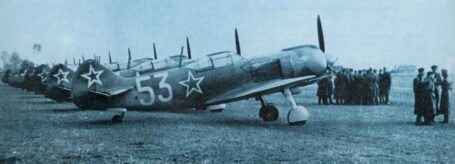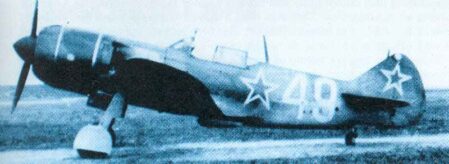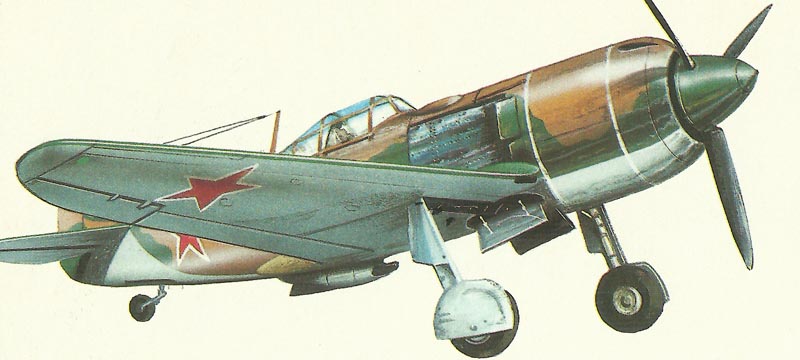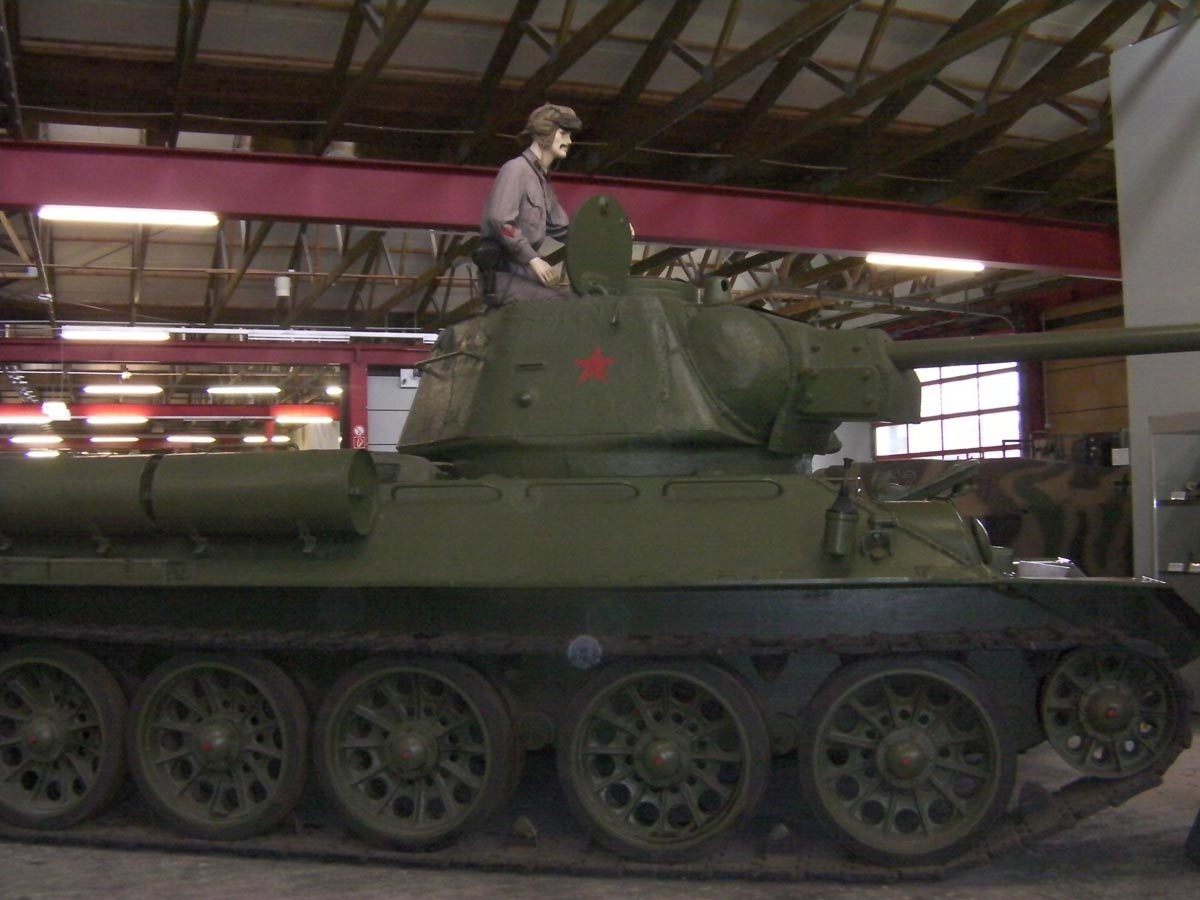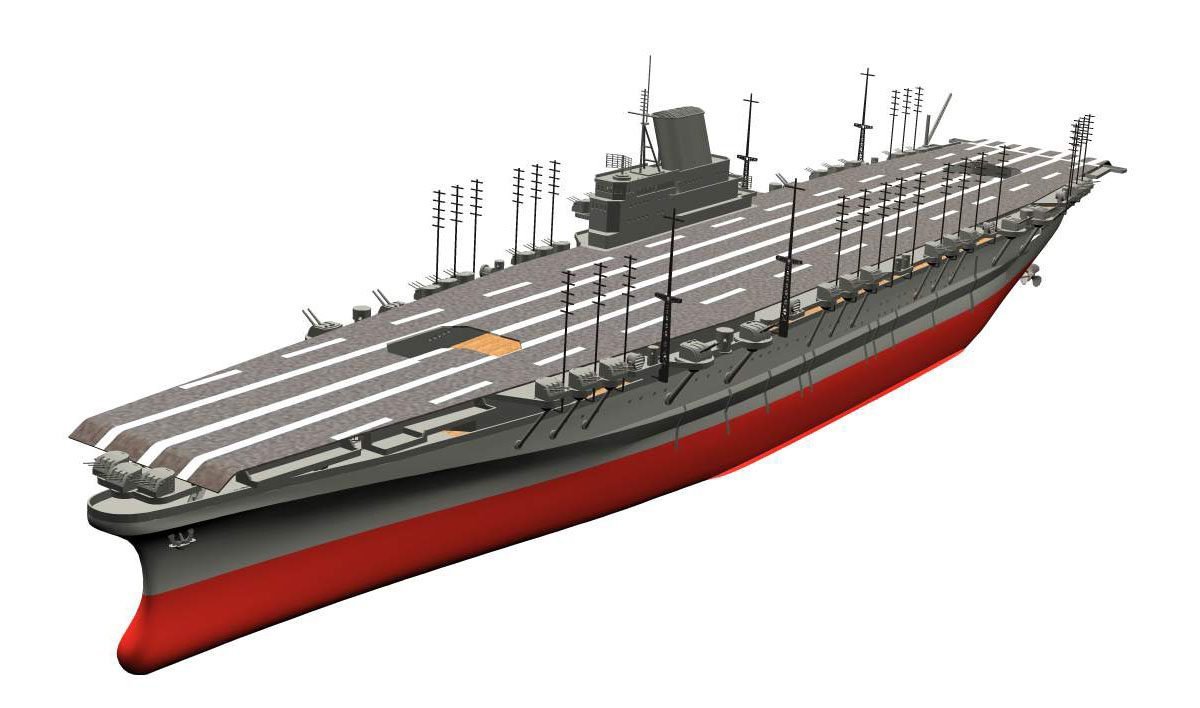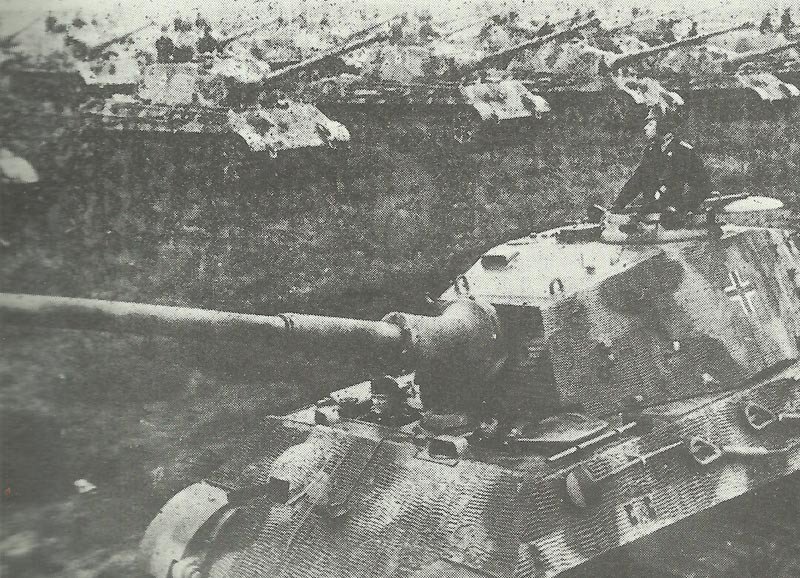Soviet fighter aircraft Lavochkin La-5 and La-7 from World War II.
History, development, service, specifications, pictures and 3D model.
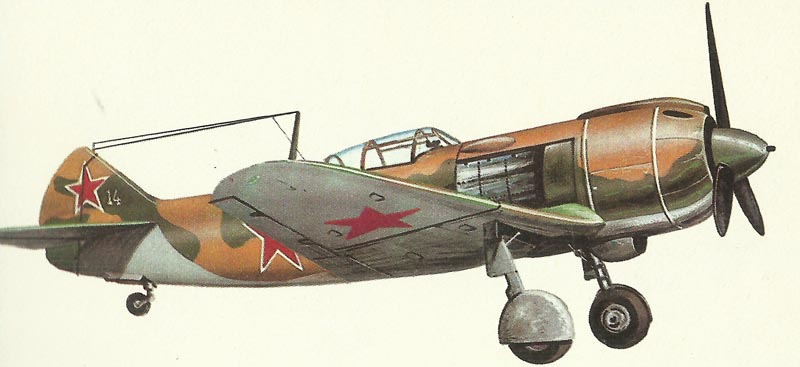
Soviet fighters Lavochkin La-5 and La-7
Table of Contents
Lavochkin La-5, La-5FN, La-7 and La-7U.
Type: Russian fighter plane.
The Lavochkin La-5 and La-7 were Soviet fighter aircraft that played a significant role during World War II.
Overview
Lavochkin La-5:
– Development: The La-5 was developed from the earlier LaGG-3 fighter, with the major change being the replacement of the inline engine with a more powerful radial engine.
– Introduction: It entered service in 1942.
– Engine: Powered by an M-82 air-cooled radial engine.
– Performance: Top speed of about 648 km/h (403 mph).
– Armament: Typically armed with two 20mm ShVAK cannons.
– Role: Primarily used as a frontline fighter and interceptor.
Lavochkin La-7:
– Development: The La-7 was an improved version of the La-5, with aerodynamic refinements and a more powerful engine.
– Introduction: It entered service in 1944.
– Engine: Powered by an ASh-82FN radial engine.
– Performance: Top speed of about 680 km/h (423 mph).
– Armament: Usually armed with three 20mm ShVAK cannons.
– Role: High-altitude interceptor and air superiority fighter.
Both aircraft were known for their:
– Excellent maneuverability
– Good climbing performance
– Rugged construction
– Ability to operate from rough airfields
The La-5 and La-7 were crucial in helping the Soviet Air Force gain air superiority over the German Luftwaffe on the Eastern Front. They were considered among the best Soviet fighters of World War II and were well-regarded by their pilots. The La-7, in particular, was seen as a match for the best German fighters of the time, including the Focke-Wulf Fw 190.
These aircraft helped establish the reputation of aircraft designer Semyon Lavochkin and contributed significantly to the Soviet war effort during World War II.
LaGG-3
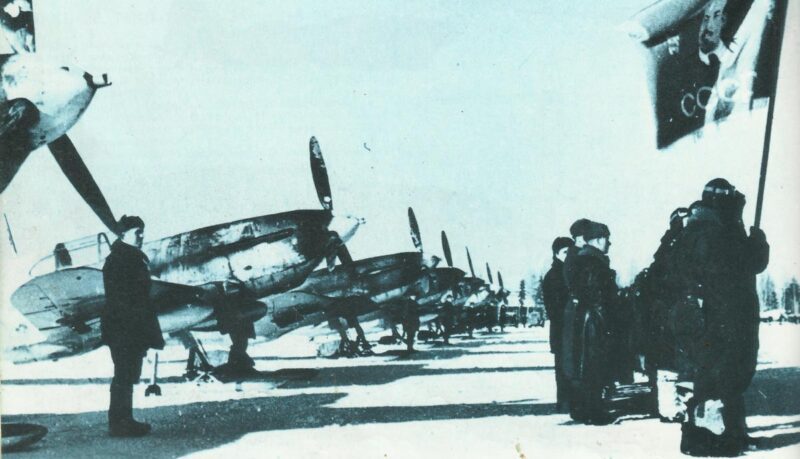
The LaGG-3 was a Soviet fighter aircraft used during World War II. Though the 1938 LaGG-3 was not a particularly distinguished aircraft, several outstanding combat aircraft were derived from it.
Development: It was developed as an improvement over the earlier LaGG-1 design, with the first prototype flying in 1940.
Design: The LaGG-3 was a low-wing monoplane with an all-wood airframe, which was unusual for its time.
Engine: It was powered by a single Klimov M-105P V12 engine, producing around 1,050-1,210 horsepower.
Armament: Typically armed with one 20mm ShVAK cannon and two 12.7mm Berezin UB machine guns.
Performance: Maximum speed of about 575 km/h (357 mph) at altitude.
Production: Over 6,500 LaGG-3s were built between 1941 and 1944.
Combat use: It saw extensive action on the Eastern Front against German forces.
Limitations: Early versions were criticized for being underpowered and having poor maneuverability.
Improvements: Later variants addressed some of these issues with improved engines and reduced weight.
Legacy: The LaGG-3 served as the basis for the development of the more successful Lavochkin La-5 fighter.
Despite its limitations, the LaGG-3 played a significant role in the Soviet air defense during the early years of World War II.
History of La-5 and La-7
These later types had little in common with their common ancestor LaGG-3. Semyon Lavochkin based his later designs on the airframe of his first fighter, continually improving it throughout the war. This approach produced fine aircraft like the La-5 and La-7, which played a leading role in the war. No fewer than 15,000 Lavochkin fighters came off the assembly lines, and the last of these, airplanes were still flying in Korea in 1950.
A change of engine – to the 1,330 hp 14-cylinder Shvetsov M-82 radial - accounted for the difference between the LaGG-3 and its successors. It was late in 1941 that Lavochkin began considering the possibility of installing this engine in place of the 1,21Ohp liquid-cooled Klimov M-1O5P.
The very first tests showed that performance could be markedly improved: the new engine provided more power, and the elimination of the liquid cooling system reduced the aircraft’s weight. This latter benefit more than compensated for the larger frontal section and hence increased drag, and the aircraft’s performance was much improved. Maximum speed, for example, went up by 25 mph (40 km/h).
This type immediately replaced the LaGG-3 on most of the assembly lines. The first production units were hybrid LaGG-5s, with the new radial engine fitted to the LaGG-3 airframe. These were delivered to units to tide them over until the definitive La-5 was ready for its baptism of fire in the spring of 1942. Production was soon in full swing, and by the Battle of Stalingrad the new Lavochkin fighter was in service all along the front.
Meanwhile, Lavochkin was working on an improved version, which was to reach units in 1943. This was the La-5FN (FN referring to the more powerful engine), with the fuel-injection M-82FN of 1,640hp. The structure was composite (with metal parts in the wing) rather than all-wood, and the controls were improved.
A year later came the La-7, incorporating aerodynamic improvements, a more powerful Shvetsov radial generating 1,850 hp, and better armament. There were three instead of two ShVAK 20 mm cannon, the engine cowling was more streamlined, and the oil radiator was moved to the lower center of the fuselage. The most striking result of these improvements was an increase of some 25 mph (ca. 40 km/h) in maximum speed over the La-5FN.
The installation of a liquid-fuelled rocket engine in the rear fuselage to provide an emergency performance boost was also studied. Some La-7s were equipped with this engine, which increased maximum speed by 10-15 per cent for short periods. The La-5 and La-7UTI two-seaters were developed for training, liaison and also observation.
The La-9 was the first in the series to be built entirely of metal. Lavochkin designed this aircraft in 1944, and examples were delivered to units late in the war.
This was a radically different airplane, even though it outwardly resembled its predecessors. The wing was completely redesigned, the armament comprised four cannon, and the engine generated 1,870 hp, The top speed of the La-9 was over 430 mph (690 km/h) at sea level, range was almost 1,100 miles (1,725km), and time to 16,250 ft (5,000 m) was four minutes and two seconds.
This model, after a series of structural changes, led to the final version of the series, the Lavochkin La-11. Appearing just after the war, the La-11 was the Soviet Air Force’s last piston-engined fighter.
The Lavochkins were well-liked by their crews, and some of Russia’s top aces flew them, including Ivan Kozhedub. Three times Hero of the Soviet Union and the leading Allied ace, he achieved all of his 62 victories in Lavochkin fighters.
The last of these was a Lavochkin La-7, issued to him in July 1944. In it, Kozhedub shot down 17 German aircraft, including a Messerschmitt Me 262 jet.
Users: Russia (Red Air Force).
Specifications Lavochkin La-5FN
Specifications:
La-5FN | Specification |
|---|---|
Type | fighter plane |
Power plant | one 1,700 hp Shvetsov M-82FN 14-cylinder two-row radial engine |
Accommodation | 1 |
Wing span | 32 ft 2 in (9.80 m) |
Length overall | 27 ft 10.75 in (8.46 m) |
Height overall | 9 ft 3 in (2.84 m) |
Weight loaded | 7,406 lb (3,359 kg) |
Maximum speed | 403 mph (650 km/hr) |
Initial climb | 3,600 ft/min (1,100 m/min) |
Service ceiling | 32,800 ft (10,000 m) |
Range | 475 miles (765 km) |
Armament:
La-5FN | Specification |
|---|---|
above engine | 2 x 20mm ShVAK cannon (each with 200 rounds) |
Underwing racks | light bombs up to total of 330 lb (150 kg) |
Service statistics:
La-5FN | figures |
|---|---|
First flight (re-engined LaGG-3) | January 1942 |
Production delivery | La-5 in June 1942, La-5FN late 1942, La-7 about June 1943 |
Production figures | Total: 15,000 |
References and literature
Combat Aircraft of World War II (Bill Gunston)
Technik und Einsatz der Kampfflugzeuge vom 1. Weltkrieg bis heute (Ian Parsons)
Das große Buch der Luftkämpfe (Ian Parsons)
Luftkrieg (Piekalkiewicz)
Flugzeuge des 2. Weltkrieges (Andrew Kershaw)
World Aircraft World War II (Enzo Angelucci, Paolo Matricardi)
The Encyclopedia of Weapons of World War II (Chris Bishop)
La 5/7 Fighters in action (Don Geer / Aircraft Number 169 squadron/siganal productions)




